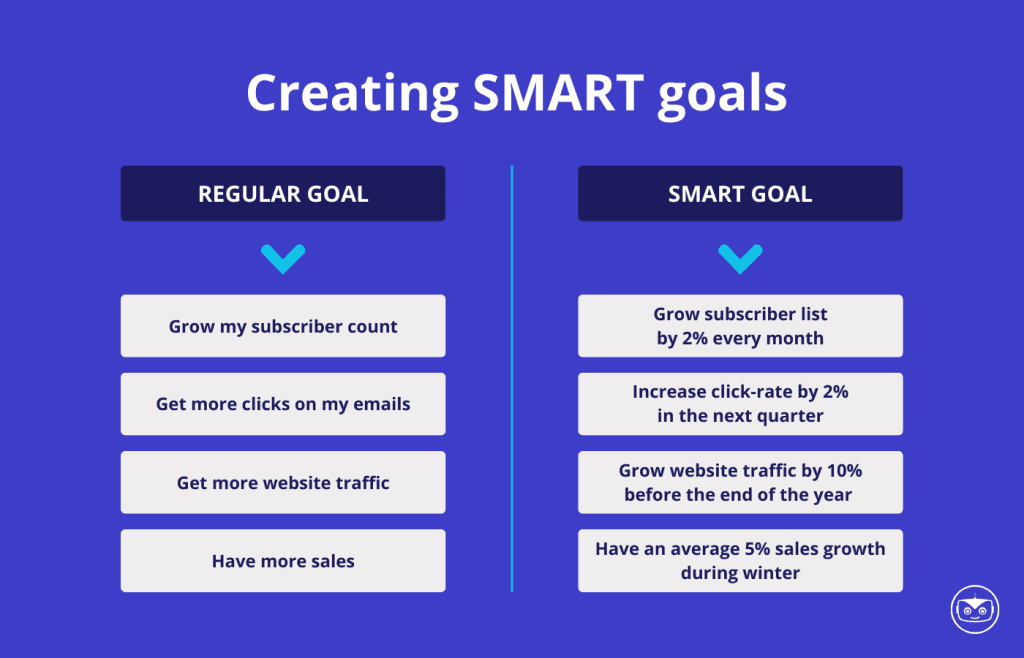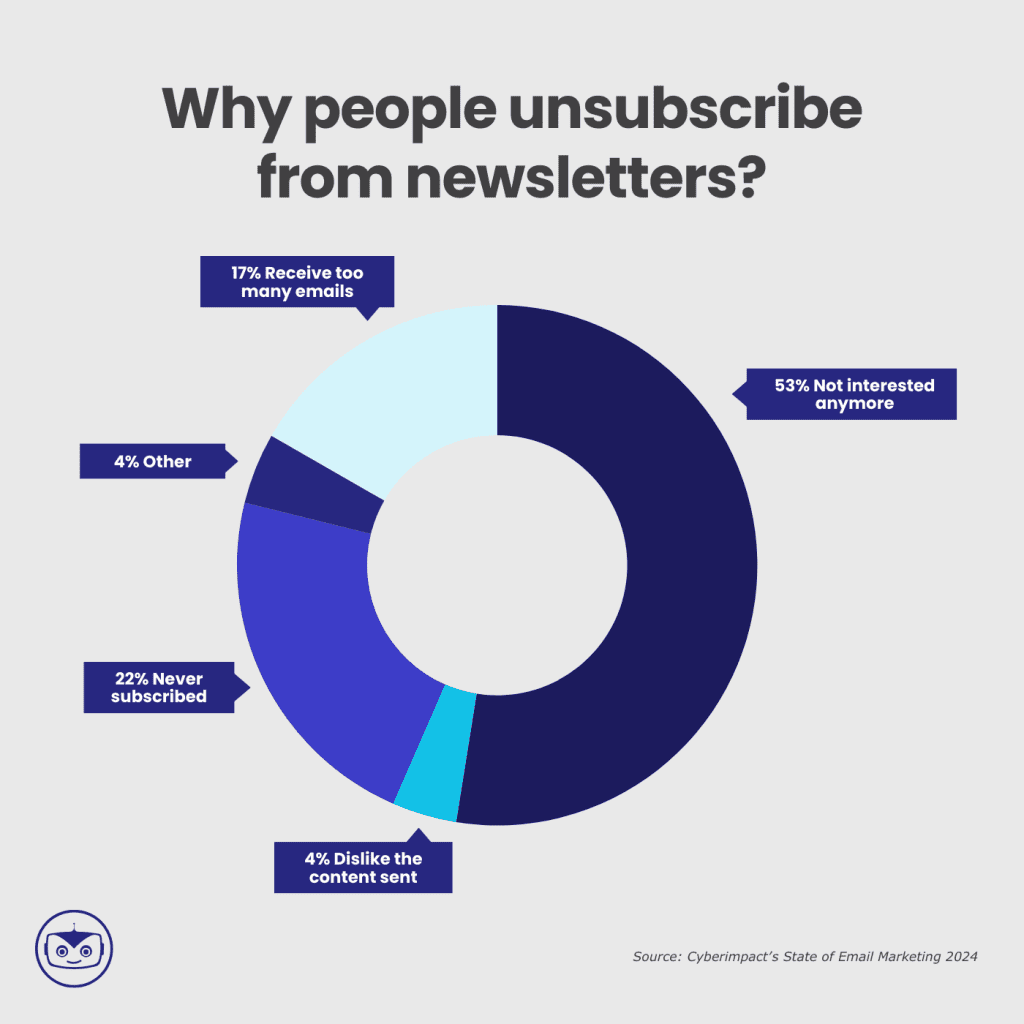This post was written with the help of AI, then reviewed and improved by humans.
A good newsletter is a powerful tool in your digital marketing arsenal. But how can you tell if your efforts are truly paying off? To do that, you need to pay attention to certain elements and statistics when sending content to your audience. Also, ensure you have a great email platform to help you save time and money.
Where many businesses go wrong with newsletters is making it all about self-promotion. Often they will reach out to their audiences only when there is a new product or having a sale. Unless you have an e-commerce or retail brand using email exclusively for promotional content, your newsletter content should be 90% educational and only 10% promotional. The reason is that customers are usually not interested in promotional content before they are ready to buy.
Minimize self-promotion unless you have significant news to share about your product or service. A newsletter is a relationship-building tool. You should use it to connect with your audience and develop your brand’s narrative and personality. All the while, creating a deeper connection with potential and loyal customers.
What is an email newsletter?
An email newsletter is a communication that businesses send to their subscribers weekly, bi-weekly or monthly. You can use it to share…
- New product or feature launch
- Industry news
- Original or curated content
- Customer feedback and case studies
- Announce sales or special offers
- Send an event invitation or reminder
- A personal message from the team or business CEO
Your newsletter allows your audience to stay updated and engaged with your brand. Here’s a comprehensive guide to help you learn how to know if you have a good newsletter and how to optimize its results.
1. Have clear objectives
The first step to writing a good newsletter is to define what success looks like for you. Are you aiming to increase brand awareness? Do you want to drive sales? Or do you want to build customer loyalty through valuable content?
Whatever the goal is, make it SMART: specific, measurable, achievable, relevant, and time-bound. You can then benchmark those goals and start drafting your strategy.

With SMART objectives, you can truly focus on what matters. Thus tailoring your newsletter content and strategies to keep you on track.
2. Track Key Performance Indicators (KPIs)
Keep an eye on metrics like open rates, click-through rates, and bounce rates to get a clear picture of what’s working with your audience. Your KPIs will give you valuable insights to adjust your content or sending times.
Important Newsletter KPIs to Track:
- Open rate: This shows you how many recipients open your emails. High open rates suggest compelling subject lines, leading to a strong sender reputation.
- Click-Through Rate (CTR): Measures how many people click on links within your email. A high CTR indicates relevant content and effective CTAs.
- Conversion Rate: Tracks how many recipients take the desired action, such as purchasing or filling out a form. This metric shows how effective your email is at driving action.
- Bounce Rate: The percentage of emails that are not successfully delivered. High bounce rates can indicate issues with your email list quality.
Unsubscribe Rate: Shows how many recipients opt out of your emails. Monitoring this can help you know if your content is missing the mark.
3. Segment your audience
As your list grows, you will notice different preferences and behaviours among your subscribers. Copying and pasting the same email to several recipients doesn’t work. It is crucial to tailor the tone of your email to suit each specific audience.
For example, you have different tones to use with your boss and personal friends. Consider the needs and expectations of your audience, and adjust accordingly.
Ensure that any supporting data in your email resonates with the audience you’re addressing — their interests, demographics and behaviours. This personalization can significantly improve engagement.
Remember that you can use features like micro surveys and marketing automation to help you segment your audience and improve your audience’s experience and engagement rates.
How to segment your newsletter:
- Demographics: Age, gender, location.
- Behavioural: Clicks in previous emails, opening (or not) previous emails, latest profile update, answers in micro surveys
- Interests: Specific product or content preferences
4. Subscriber growth and engagement
A growing subscriber list is a good indicator of a healthy newsletter strategy. However, more important than sheer numbers is how engaged your subscribers are.
Are they interacting with your content, providing feedback, or sharing your newsletters? High engagement typically equates to a more effective newsletter strategy. You can measure engagement with your newsletter’s click-through rate (CTR), for example.
Tips to improve your newsletter engagement:
- Invite people to read your articles or click the links shared
- Include social sharing buttons.
- Create engagement opportunities using micro surveys.
5. Review and analyze your content
To write a newsletter, you need to create and curate good content. Plus, it is essential to analyze how your audience is responding to the content of your newsletters and try to look at it from the reader’s perspective.
Which topics get more attention? Which type of emails are getting more engagement — educational pieces, industry news, or promotional offers? Which content caught the reader’s attention? Understanding what your audience prefers helps tailor future content to their interests.
Did you know that 33% of recipients open emails based only on subject lines? And that 69% report spam also due solely to the email subject line? If an email subject line doesn’t grab a subscriber’s attention, it is more likely it will go to the trash or spam folder. Therefore, writing a good subject line is a critical skill for any marketer.
How to analyze your newsletter content:
- Review engagement metrics for different types of content.
- Identify the best-performing topics and replicate their success.
- Keep gathering and applying subscriber feedback to your content.
Examples:
- If educational content performs well, create more in-depth guides or tutorials.
- If emails with fewer CTAs have a higher click-through rate, try replicating that strategy in more email templates.
6. Survey your subscribers
Sometimes, the best way to learn about your audience is to ask them directly. Using Cyberimpact you can easily create surveys to gather feedback on what content they find valuable, and what they’d like to see more of.
This direct feedback can provide invaluable insights into how to make a better newsletter. It can help you identify areas of improvement you have not seen yet and strengthen your relationship with your audience.
Questions to ask your audience:
- What type of content do you enjoy the most?
- How often would you like to receive our emails?
- Did you enjoy this email about [include a topic]?
- Would you like to receive more emails about [include a topic]?
- Did you like receiving this email?
7. Don’t be too proud to analyze unsubscribe rates
Nobody likes to lose subscribers but there is a lot to learn from your unsubscribe rate. It can alert you to irrelevant content or a high sending frequency. Use this feedback to refine your strategy.
According to our latest State of Email Marketing Report, these are the top reasons people unsubscribe from newsletters:

The most common issue is losing interest in the newsletter topics, which shows how important it is to stay relevant and review what you know about your audience. By following other best practices in this post, such as having SMART goals and segmenting your audience, you have lower the chances of unsubscribes.
8. Study industry benchmarks
How does your newsletter compare to others in your industry? Research industry benchmarks for open rates, click-through rates, and other metrics to learn more and check how your newsletter is performing.
We have recently launched Cyberimpact’s State of Email Marketing Report with benchmarks from several businesses and industries across Canada. With data collected throughout 2023, this report shows you the average open rate, click rate, unsubscribe rate and other important info about email marketing in Canada.
Next steps to follow
A good newsletter is not just about numbers. To measure its success you need to understand what those numbers mean for your business. Set clear objectives, keep a keen eye on your KPIs, and track your content’s impact. Plus, be flexible and open to adapt — you’re not just tracking progress, you are creating a path for continual growth and success.
The world of email marketing is always evolving, and so should your newsletter strategy. Remember, the most successful email marketers listen, adapt, and learn from their audience’s needs.
